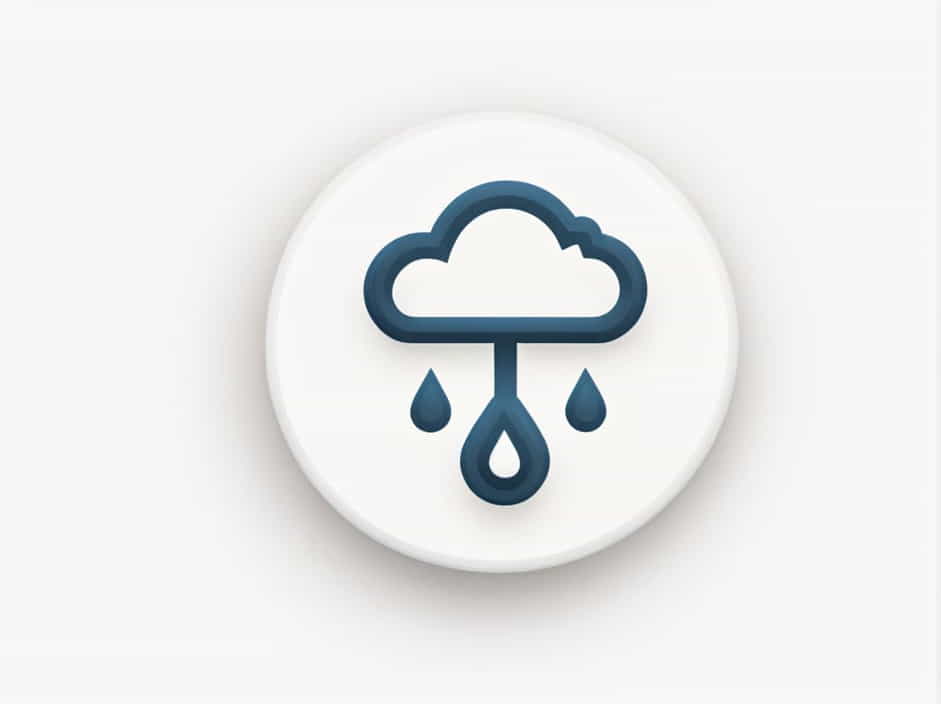Convectional rainfall is a type of precipitation that occurs due to intense heating of the Earth’s surface. It is most common in tropical and equatorial regions, where high temperatures cause rapid evaporation and condensation. This results in short but heavy downpours, often accompanied by thunderstorms and lightning.
Understanding the characteristics of convectional rainfall is essential for predicting weather patterns, managing water resources, and preparing for extreme weather conditions. Below are two key characteristics of convectional rainfall.
1. Heavy Rainfall Over a Short Period
Rapid Formation of Rain Clouds
One of the most defining features of convectional rainfall is its quick formation and short duration. As the sun heats the land, moisture in the air evaporates and rises. Once it reaches higher altitudes, it cools and condenses rapidly, forming rain clouds. This process leads to sudden and intense rainfall.
Short-Lived but Intense Showers
Unlike frontal rainfall, which can last for hours or even days, convectional rainfall is usually brief. It typically lasts less than an hour, but the amount of rainfall can be substantial. This makes it a major contributor to flooding in urban areas with poor drainage systems.
Localized Rainfall
Convectional rainfall is often restricted to small areas rather than covering a large region. Since it depends on local surface heating, the rain falls where the heat is most intense. This is why some parts of a city may experience heavy rain, while nearby areas remain dry.
Examples of Short-Duration Heavy Rain
-
Amazon Rainforest: Experiences daily convectional rain in the afternoon.
-
Southeast Asia: Countries like Thailand, Indonesia, and Malaysia frequently receive short but intense showers.
-
African Savannah: Convectional rainfall contributes to the seasonal wet and dry climate.
2. Often Accompanied by Thunderstorms and Lightning
Formation of Cumulonimbus Clouds
Convectional rainfall is commonly linked to cumulonimbus clouds, which are large, towering clouds that produce thunder, lightning, and heavy rain. These clouds form due to strong upward air currents, creating turbulent weather conditions.
Electrical Charges in the Clouds
As the warm air rises rapidly, it causes friction within the cloud ptopics. This friction generates electrical charges, leading to lightning. When the energy discharges, it creates thunder due to the sudden expansion of air.
Storms and Extreme Weather Conditions
In some cases, convectional rainfall can result in severe thunderstorms, hail, and strong winds. This is especially common in regions with high humidity and extreme heat, where the conditions are ideal for storm development.
Examples of Thunderstorm Activity
-
Monsoon Season in India: Frequent thunderstorms occur alongside convectional rain.
-
Florida, USA: Known as the "Lightning Capital of the World" due to frequent convectional storms.
-
Central Africa: Experiences some of the highest thunderstorm frequencies globally.
How Convectional Rainfall Affects the Environment
1. Benefits to Agriculture
The moisture from convectional rainfall is essential for plant growth. In tropical regions, this rain sustains forests, crops, and grasslands, supporting biodiversity and local economies.
2. Risk of Flooding and Soil Erosion
Since convectional rainfall is intense, it can cause flash floods, especially in cities with poor drainage. Additionally, heavy downpours can wash away topsoil, leading to erosion and reduced soil fertility.
3. Influence on Climate and Weather Patterns
Convectional rainfall helps regulate temperature and humidity levels. It prevents extreme heat buildup by redistributing heat energy through evaporation and precipitation cycles.
Convectional rainfall is an important part of the global water cycle, particularly in tropical and equatorial regions. Two of its key characteristics are:
-
Heavy but short-lived rainfall, often occurring in the afternoon.
-
Thunderstorms and lightning, caused by the rapid rise of warm air and the formation of cumulonimbus clouds.
This type of rainfall is crucial for ecosystems, agriculture, and weather balance, but it also presents challenges such as flooding and storm-related damage. Understanding convectional rainfall allows for better weather forecasting, disaster preparedness, and water management.
